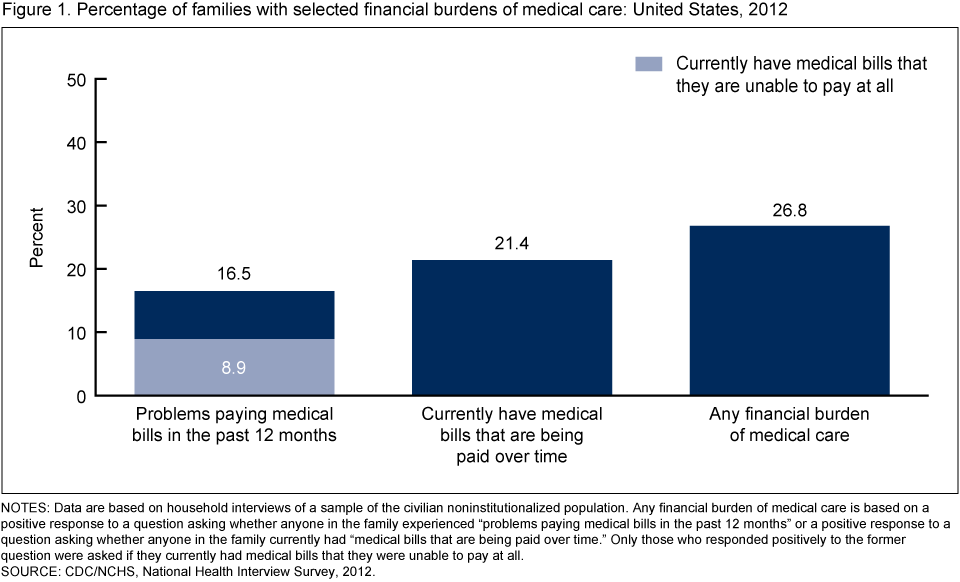Financial Burden of Medical Care: A Family Perspective
Posted on byRecently published data from the National Health Interview Survey (NHIS) found that 1 in 5 persons was in a family having problems paying medical bills, and 1 in 10 persons was in a family with medical bills that they were unable to pay at all. NHIS defines “family” as an individual or a group of two or more related persons living together in the same housing unit. The family perspective is important to consider when examining financial risk because significant expenses for one family member may adversely affect the whole family. Health insurance coverage is one way for a family to mitigate financial risk associated with health care costs, although health insurance status may differ among family members.
A new report explores selected family demographic characteristics and their association with financial burdens of medical care (problems paying medical bills, paying medical bills over time, and having medical bills that cannot be paid) based on data from the 2012 NHIS.
Key Findings from the Report:
- In 2012, more than one in four families experienced financial burdens of medical care.
- Families with incomes at or below 250% of the federal poverty level (FPL) were more likely to experience financial burdens of medical care than families with incomes above 250% of the FPL.
- Families with children aged 0–17 years were more likely than families without children to experience financial burdens of medical care.
- The presence of a family member who was uninsured increased the likelihood that a family would experience a financial burden of medical care.
